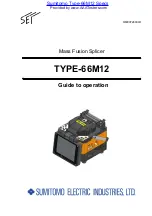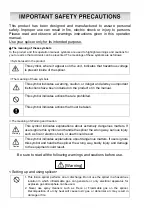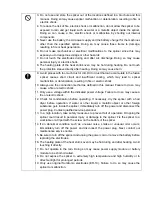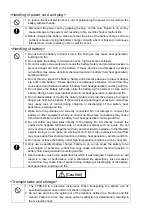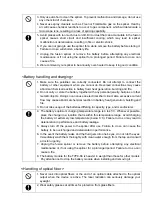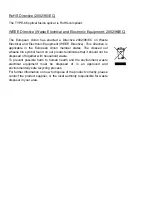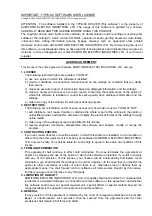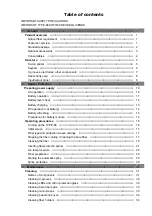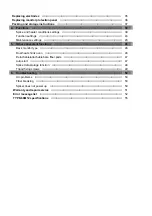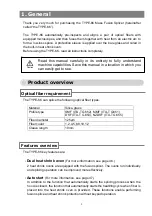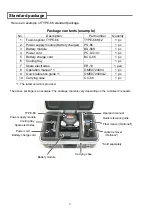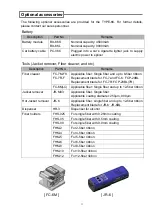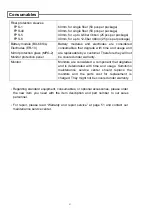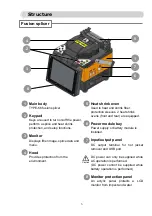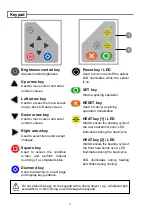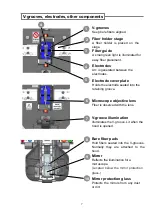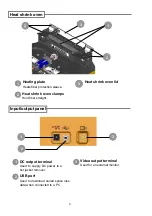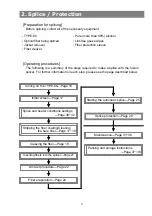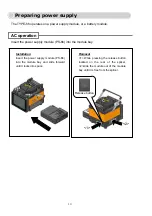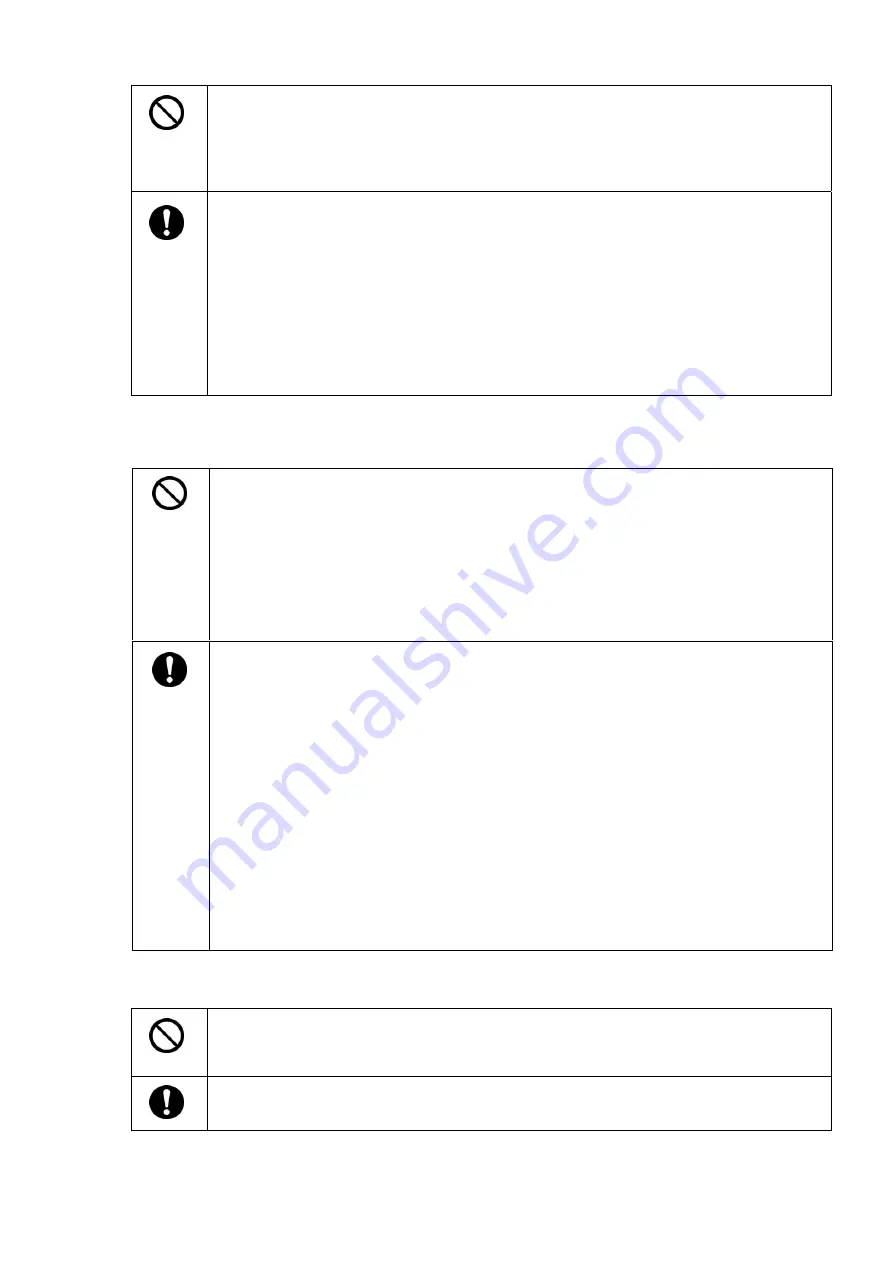
3. Only use alcohol to clean the splicer. To prevent malfunction and damage, do not use
any other kind of chemicals.
4.
Never use spray cleaners such as Freon or Flammable gas on the splicer. Heat by
arc will cause chemical reactions to occur to gas component, which will deteriorate a
microscope lens, resulting in a loss of splicing capability.
5. Avoid places with too much dust or dirt. Dirt or dust that can accumulate in the fusion
splicer causes short circuit and insufficient cooling, which may lead to splicer
malfunction or deterioration, resulting in fire or electric shock.
6. If you are not going to use the splicer for a while, remove the battery before storing it.
Failure to do so will shorten a battery life.
7. Unplug the fusion splicer or remove the battery before attempting any electrical
maintenance or if not using the splicer for a prolonged period. Failure to do so can
cause a fire.
8. We recommend your splicer to be annually over-hauled to keep it in good condition.
<Battery handling and charging>
1. Make sure the polarities are correctly connected. Do not attempt to connect the
battery or other equipment when you cannot do. Reversed connections may cause
abnormal chemical reaction in battery fluid, heat generation, bursting and fire.
2. Do not carry or store the battery together with any personal jewelry, hairpins or other
metallic objects. Doing so can cause an electrical short circuit. Also excessive current
flow may cause abnormal chemical reaction in battery, heat generation, bursting and
fire.
3. Do not miss usage of the batteries differing in capacity, type, and manufacturer.
4. The battery's optimum charging temperature range is 0 to 45˚C. Whenever possible,
place the charger in a location that is within this temperature range. Avoid charging
the battery at extremely low temperature (below 0˚C). Failure to do so may lead to
deterioration in performance and battery leakage.
5. Always turn off the power to the splicer after use. Failure to do so can cause the
battery to be overcharged and deteriorated in performance.
6. In the event the battery leaks and the fluid gets into one's eyes, do not rub the eyes.
Immediately wash them thoroughly with clean water enough from the tap and consult
a doctor urgently.
7. Unplug the fusion splicer or remove the battery before attempting any electrical
maintenance or if not using the splicer for a prolonged period. Failure to do so can
cause a fire.
8. The battery module for the TYPE-66 is heavier in weight than those for other models.
Pay attention not to drop the battery module when installing and removing it.
<Handling of optical fiber >
1. Never look into optical fibers or the end of an optical cable attached to the optical
output when the device is active. The laser radiation can seriously damage your
eyesight.
2. Wear safety glasses at all times for protection from glass fibers.
Summary of Contents for TYPE-66M12
Page 67: ...57...

